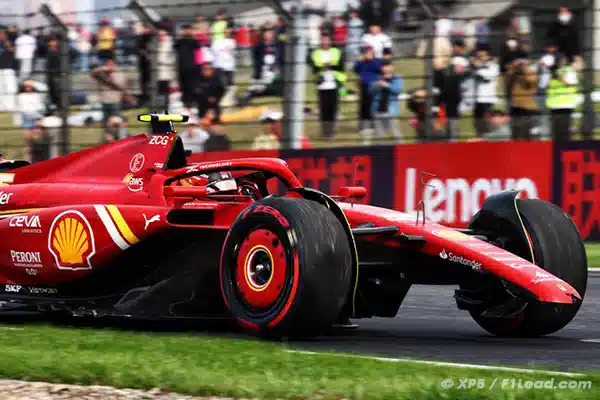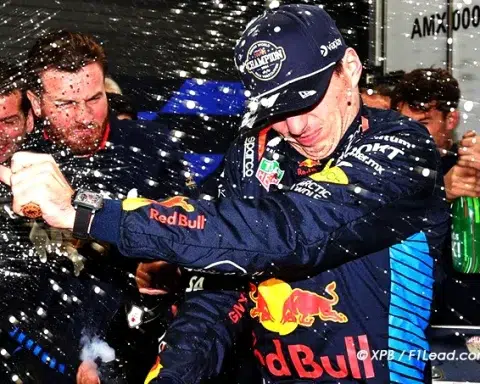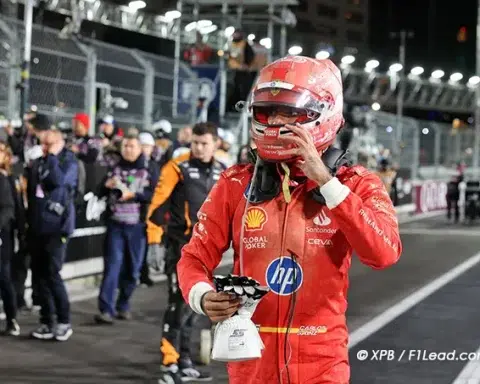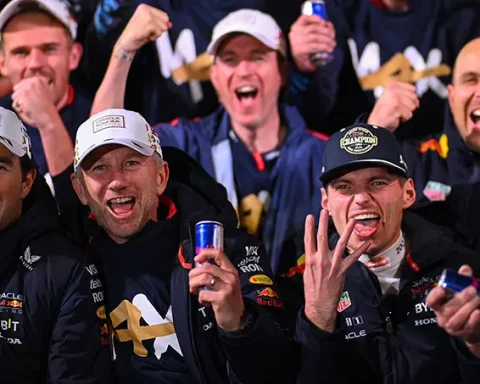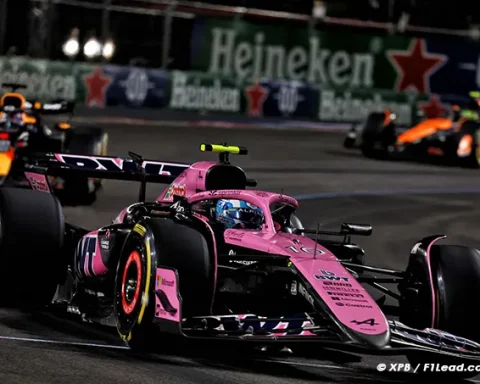The FIA has upheld the qualifying results of the Grand Prix, rejecting Aston Martin F1’s complaint about ambiguity in the regulations and a disputed on-track incident involving a Ferrari driver.
The FIA has decided to dismiss the protest lodged by Aston Martin F1 against the qualifying results.
Article 39.6 of the Sporting Regulations, cited by Aston Martin, states: “Any driver whose car stops on the track during the qualifying session or the Sprint Shootout will not be allowed to participate further in that session.”
Aston Martin F1 filed a complaint regarding the qualifying result because the Ferrari driver had an accident and was immobilized on the track. The scoreboard displayed STOP, but Sainz restarted afterwards.
Yesterday, during the sprint qualifying, Charles Leclerc experienced a similar mishap, not immobilizing his car long enough for the race direction to mark him as stopped.
Aston Martin was likely targeting this specific point, assuming the term “stopped” in the regulation was too vague. Again, the lack of precision in the regulations, which the FIA has promised to rewrite since 2021, caused issues twice today.
The penalty given to Fernando Alonso for his clash with Carlos Sainz, which was 10 seconds and three points on his license, was considered due to a legal loophole regarding these situations, as confirmed by the FIA.
Sporting Commissioners’ Decision:
We have heard from Aston, the other team managers present at the hearing, and the FIA delegates, and have made the following decision regarding the protest:
a. It is clear that the language of Article 39.6 suggests that as long as a car “stops” on the track during a qualifying session, that car should not be allowed to participate further in the session.
b. However, examples cited by some of the team leaders present and the FIA show that this rule was not applied by the teams and the FIA in the past in this way.
c. The FIA team explained that as long as the car was able to restart and continue from a stopped position within a reasonable time, this is normally allowed. The typical time is about 30 seconds, although this varies depending on the circumstances. The teams themselves have said they had previously tried to agree on what they considered a reasonable delay before a vehicle is considered “stopped”. Unfortunately, they were unable to reach a final agreement on the maximum allotted time.
d. For the FIA, what was crucial was that the car did not receive any external help to restart (for example, from the marshals).
e. Aston also admitted that there had been previous examples of cars stopping on the track and being allowed to continue, despite the clear wording of Article 39.6. However, they felt that stopping in this case, for 1 minute and 17 seconds, was too long and therefore should not have been allowed.
f. The issue then became one of duration: is 1 minute 17 seconds too long?
g. In the absence of clear guidelines in the regulations or an established and agreed practice regarding excessively long periods, we considered that it was a decision best left to the race direction.
h. We considered examples in Canada, Monaco, and Baku where cars had “stopped” (and would therefore have violated Article 39.6) but were allowed to continue and participate further in the session, without complaint from the teams.
i. Aston also argued that the fact that the messaging system suggested the car was “stopped” concluded this fact for Article 39.6. Race direction clarified that the language was the standard language used in the system and therefore did not convey a regulatory status. Indeed, there was an example of Alexander Albon in Montreal in 2022 where he was stopped for about forty seconds and restarted without complaint from any team while the messaging system also showed that the car had “stopped”. We therefore do not think that the messaging system indicated a decision on the part of race direction for the purposes of Article 39.6.
j. There was therefore a clear trend in the past practice of the sport according to which this rule was interpreted to allow a car to restart and continue, as long as it did not receive external assistance to do so.
k. We also saw the minutes of the Formula 1 commission meeting held in Spa, Belgium on July 28, 2023, where Article 39.6 was specifically discussed. The conclusion reached at this meeting seemed to be, among other things, this: “It was agreed to add ‘external assistance’ to Article 39.6.”
l. We were informed that the above amendment to Article 39.6 had in fact not been made, so we could not rely on these minutes, beyond the fact that there seemed to be an agreement at least among those attending that meeting that day and that this was consistent with the approach adopted by race direction today.
m. In the above circumstances, given the many examples where cars had stopped for different durations and were allowed to restart and continue participating in the concerned session, we considered that the decision made by the Race Direction was not incompatible with past practice nor contrary to Article 39.6.
n. We considered that even though the simple wording of Article 39.6 justified a more severe penalty, the constant practice of this sport to date did not justify questioning the race direction by the sporting commissioners.
We have therefore dismissed the protest.
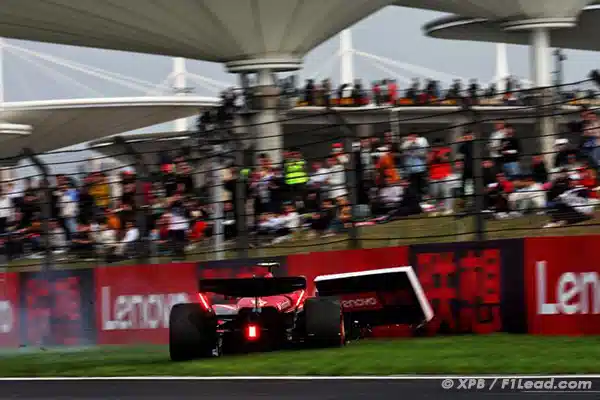
Official: FIA rejects Aston Martin F1’s complaint and confirms qualifying results. Official: FIA rejects Aston Martin F1’s complaint and confirms qualifying results. F1 2024 Official: FIA rejects Aston Martin F1’s complaint and confirms qualifying results Chine GP
- ReadMore>Williams F1 Struggles in Shanghai, Albon Pushes
- Following us on Facebook and Twitter
